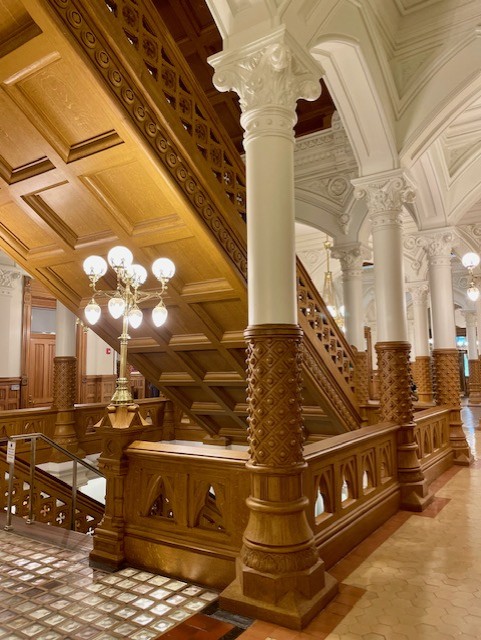A National Historic Landmark
Old City Hall is a legislative building that houses various legislative agencies and commissions (capitol police, DLAS, Youth Commission, VA 250, etc). Richmond City Hall was constructed between 1886 and 1894 based on a design by the acclaimed architect Elijah E. Myers, who won a competition for the project in 1883-1884. The building occupies a full city block near the Virginia Capitol grounds and measures 170 feet by 140 feet. It exemplifies High Victorian Gothic architecture and stands four stories tall. Its striking silhouette features four corner towers, with the northwest corner dominated by a clock tower that rises to 195 feet. Built from stone, brick, and cast iron, the exterior showcases a mix of textures, particularly the locally sourced granite. It is listed on the National Register of Historic Places and recognized as a National Historic Landmark.

In 2015, Quinn Evans, located in Washington, D.C., was tasked by the Virginia Department of General Services with restoring a historic site to its original splendor while also incorporating modern systems and infrastructure, the project aimed to create a contemporary workplace for a state agency within the historic space.
In 2015, Quinn Evans, located in Washington, D.C., was tasked by the Virginia Department of General Services with restoring a historic site to its original splendor while also incorporating modern systems and infrastructure, the project aimed to create a contemporary workplace for a state agency within the historic space.
The most significant transformation was the restoration of the atrium, which rises four stories. The original lay light system and historic fixtures were revitalized, and a new skylight, designed to match the original, incorporates insulated glazing for better energy performance. The previous bold polychrome color scheme from the 1980s was replaced with a historically accurate palette uncovered during extensive paint analysis. The new design features off-white plaster walls and ceilings, oak woodwork, and painted wood graining on the bases of columns, cast-iron balustrades, and stairs.


